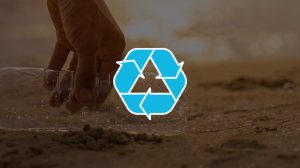Plastics: The coronavirus could reset the clock
It will be a stress test for the first two of the 3Rs – reduce, reuse, recycle – that form the principles for strategies to prevent plastics pollution. The key hygiene issues arise at the consumption stage and downstream, during collection and sorting of plastic waste before recycling.
Supply chains are being strained to meet a surge in demand for single-use packaging and medical supplies. Several governments such as Tamil Nadu in India have suspended bans of single-use plastic bottles and bags in retail trade. The United Kingdom has suspended the plastic bag charge for online deliveries, with Scotland delaying the introduction of a packaging deposit-return scheme. Some fast food and retail chains, including Starbucks, have banned the use of reusable cups and food containers. In the United States, Maine has postponed a plastic bag ban, while New Hampshire and the city of Cambridge, Massachusetts, have banned reusable bags during the outbreak and ordered retail stores to use single-use paper or plastic bags. These measures have all been announced as temporary, but how long they will stick, fed by anxiety around health concerns? Plastic interest groups in the U.S. are seizing the opportunity to argue that hygiene concerns and a longer shelf life for fresh produce are permanent advantages of single-use plastics. The consulting firm Wood Mackenzie observed that tighter packaging regulations in China to deal with coronavirus would likely increase demand for flexible packaging, usually made of plastics.
So far, these regulatory roll-backs are exceptions rather than the rule. Hundreds of the world’s jurisdictions that had introduced bans or fees on single-use plastic packaging have maintained their policies. In Africa, this includes Burundi, Kenya, Rwanda, and Tanzania, while Uganda banned plastic bags in late February alongside coronavirus containment measures. New York State’s ban on single-use plastic bags went into effect as planned on March 1, although its enforcement was later postponed to May 15. This is not in defiance of the health risks, but an effort to address the immediate health crisis without creating another one down the road. These jurisdictions advise extreme caution, by washing and disinfecting reusable bags.
Bloomberg New Energy Finance (BNEF) predicts that concerns around food hygiene due to the coronavirus could increase the amount of plastic, including medical supplies and packaging. Yet, BNEF said that any spike in plastic demand would likely be temporary and should not change the long-term goals of transitioning to a circular economy. The authors still envisage a future in which all plastics are either reused or recycled, except for handling medical plastic waste separately from municipal waste streams.
- Address psychological and behavioral barriers, including a perception that reused or recycled products may not be hygienic. Fear-driven habits and mistrust developed under extreme stress often stick long after the source of stress disappears. There is an opportunity for people to, as Nobel Prize-winning economist Daniel Kahneman says, “think slow” and take responsibility for the impacts of our consumption and behavioral choices. This includes plastics and packaging we “need” and those that we can live without.
- Design for hygiene and recycling. Packages and containers may need to be easily washed and disinfected for multiple use and refills. This may favor plastic substitutes, such as glass and metals, or ignite innovation in a new generation of reusable plastic items. Going well beyond the current 10 percent rate of plastic recycling is possible when most plastic packages and consumer products are made from simpler and more homogenous molecules. Currently, consumers often choose fancier plastic products with harmful colorants and plasticizers, which are more expensive to recycle and more hazardous as waste.
- Develop new business models for collection and sorting of plastic waste. These are the critical bottlenecks to the economics of mechanical recycling downstream, but also can cause exposure to contamination. Local initiatives can rebuild trust in the safety of sorted waste and prepare clean, homogenous plastic streams for recyclers.
- Develop new technologies to recycle mixed plastics. Paradoxically, in many OECD countries the demand for recycled plastics vastly outpaces supply. Current mechanical recycling is viable for a small fraction of plastics, mainly water bottles (PET) and more rigid containers made of HDPE (marked ‘1’ and ‘2’ respectively on products), but not for the complex stream of sachets, films, bags, multilayer containers, or synthetic fibers. Emerging technologies, including machine learning in sorting or chemical recycling, promise to deliver high-quality resins from mixed plastic waste. Chemical recycling is risky and can apply only where more sustainable alternatives are not available and strong environmental management systems are in place.
- Create new policy incentives that encourage circularity. Just as landfill tipping fees spurred initial demand for recycling in the past (at least in countries that could enforce bans on illegal dumping of waste), scaling up sustainable plastic solutions will require a new wave of behavioral nudges, labels, standards, and taxes/fees on plastic products that use virgin pellets, are expensive to recycle, and cause environmental and health hazards. Complementary public and private investments in physical infrastructure for sorting, collection, and recycling can be built into countries’ post-coronavirus recovery plans.



